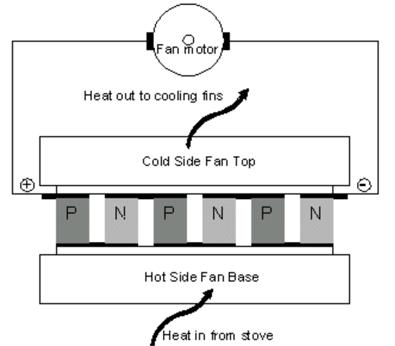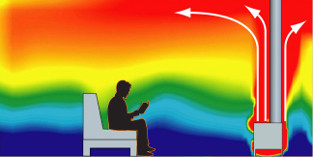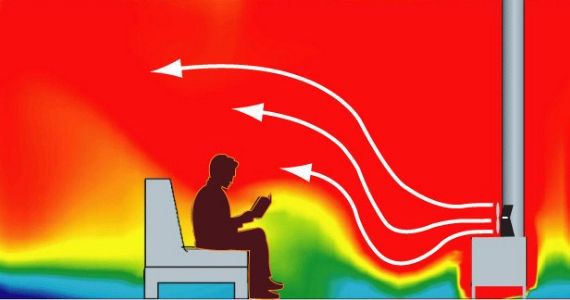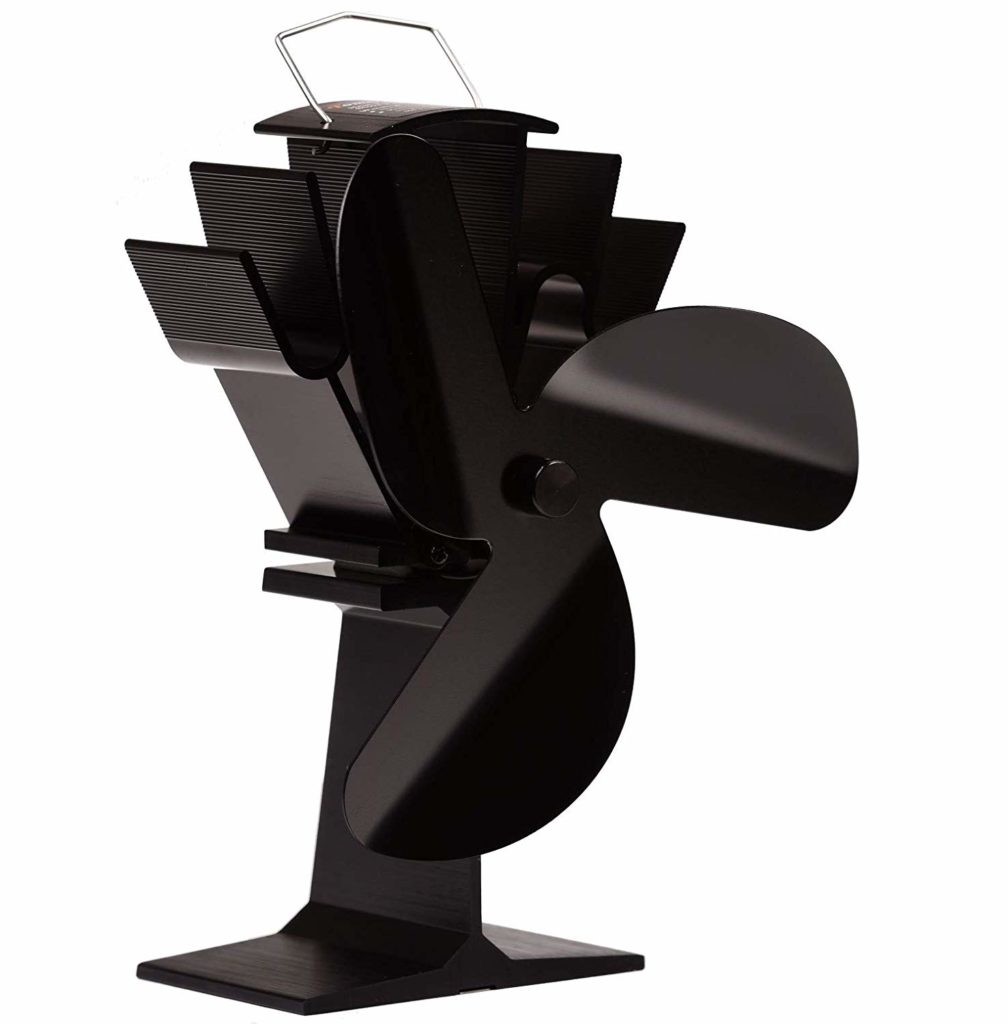We are living in an age of science and innovation. Technology is reaching a different dimension with each and every new innovation. Among all these new inventions, a heat powered fan is a real game-changer. During winter whenever you find a comfortable place to sit in front of your stove after a while you realize the heat is too much to handle. And, if you move too further you start feeling cold. That is an annoying thing for most of us. But, a heat powered fan can be a great solution for a problem like this. Though it changes the complete distribution capacity of a stove, people become confused about how does heat-powered fan works since it doesn’t connect to a power outlet or batteries either. You don’t need to be worried because by the end of this article you will get a clear concept of the working mechanism of a heat powered wood stove fan.
Stoves fans are getting a huge amount of popularity in recent times. Especially in the United Kingdom stove fans have become popular among the masses. People are getting much more attracted to these amazing creations. Not only because it’s affordable, but is it also changing the dimension of room heating with a stove.
Stove fans are a special kind of magical creature, and it has become a very demanding product in a very short time. Usually, the heat that a stove produces goes upward through the stove pipe. It takes a lot of time for a big room to get heated up after you turn on a stove. But, with a stove fan, even a huge room can be heated up in a very small amount of time. Many of us might think that a stove fan runs with battery or electricity but that’s completely a wrong idea. A stove fan works for most stoves. The only requirement is that the stove needs to achieve a certain amount of temperature so that the fan can run. A stove fan is basically a motor engine that uses the heat of the stove to run itself. The heat difference between the facet of the stove and the top of the fan powers the engine, which starts the fan around, the cooling fans at the backside helps to keep the temperature of the fan much lower. The motor that is used in the fan normally utilizes the concept of the thermopile, a simple technology where two semi-conduits at different temperatures can generate a voltage between them.

The amount of current which is created is not huge but the power is enough to run the fan. Stove fans only work under certain temperatures, which means a stove fan will not work for every stove. Because the fan generates electricity from the heat of the stove. Generally, a stove fan is positioned over the surface of a stove and it consumes the power that the stove produces when the surface of the stove gets warmer the turbines start to run. Heat mounts up from the pedestal of the fan to heat a motor installed under the fan blade. The heating of this device causes thermal energy, which starts to turn the blades and blow the warm air around the room. It is essential to place the fan properly so that it can get some cool air from the back. It helps the fan to work in a proper manner. If the fan is positioned too far, it might not be able to run. But, there should be some precautions while using a stove fan. Although it does not need any electricity or battery to run, there is a motor inside the fan. If the fan gets overheated the motor can be damaged. To avoid that problem a user should always place the fan properly. There are stove thermometers available to check the temperature of the fan. That is the easiest way to know for you when the fan is getting overheated. If your fan gets too hot try to move it towards a cooler part of the stove or give it a bit of time to cool down. Different models of heat-powered fans have different maximum temperature capacities. Make sure you check the maximum temperature before you buy one. Otherwise, your fan can be dead because of overheating. So, be careful of the temperature of your heat-powered fan while you use it.

Stove fans are cheap and much more cost-effective. They don’t need any electricity or any sort of power source rather than the heat of the stove. It works automatically when its base gets heated up. The upper side of the fan stays cold, while the pedestal heats up and keeps its motor running. Heat-powered fans are eco-friendly as well. Stove fans also reduce the usage of firewoods. You will need very little firewood because of the airflow into the fireplace. This means you are burning the same amount of firewood to generate heat and to run the fan. A stove fan can furnish that air supply for a long time. You don’t even need to undergo any hassle to install a stove fan. You do not even need an electrician to set your heat-powered stove fan. You just buy one place it over your stove and it will start running automatically as the stove generates heat.
How does Pellet Stove Distribute Heat Without and With Stove Fan?

When you turn on your pellet stove and the stove starts burning wood pellets in the burn pot, it begins to generate heat. The nature of heat is that it will rise toward the ceiling and try to stay there. The thermal radiation of the heat helps to distribute the heat in all directions. But, this process is very slow. It will take hours to get the proper heat from the pellet stove. Furthermore, most of the heat of the pellet stove is trapped in the ceiling and lost which means you will not get the full benefits of your pellet stove.

If you place a wood stove fan, the heat coming out from the stove and heat moving around your stove will be pushed at the centre of the room toward the outside. So, you have to rely on the thermal heat radiation of the stove. The heat will distribute evenly all around the room. Another great thing about a wood stove fan is that it will not blast air like a traditional fan, rather you will feel a gentle airflow coming out of it. So, you will not feel cool, rather you must realise an even and comfortable temperature throughout the room
There is a myth that a stove fan bigger in size can produce more heat or heat up a room real quick. But, that is not correct even a smaller stove fan can make a bigger room pretty cozy in a short time. Bigger fans will take more time to operate. Because the motor inside will take much longer to get heated up and produce power to run the blades. But, smaller fans have a better blade speed which means your room can be heated up within minutes. Smaller fans are very easy to move from one place to another on the other hand big fans are heavy and hard to move. Lastly, we can say that each and everyday science is making our lives easier and more comfortable. We can barely think about our lives without science and technology these days. The stove fan is just another amazing invention that can save up money for anyone who has a stove at their place. It is very useful for people who want to have a warm home during the harsh cold of winter.
Also Read:

